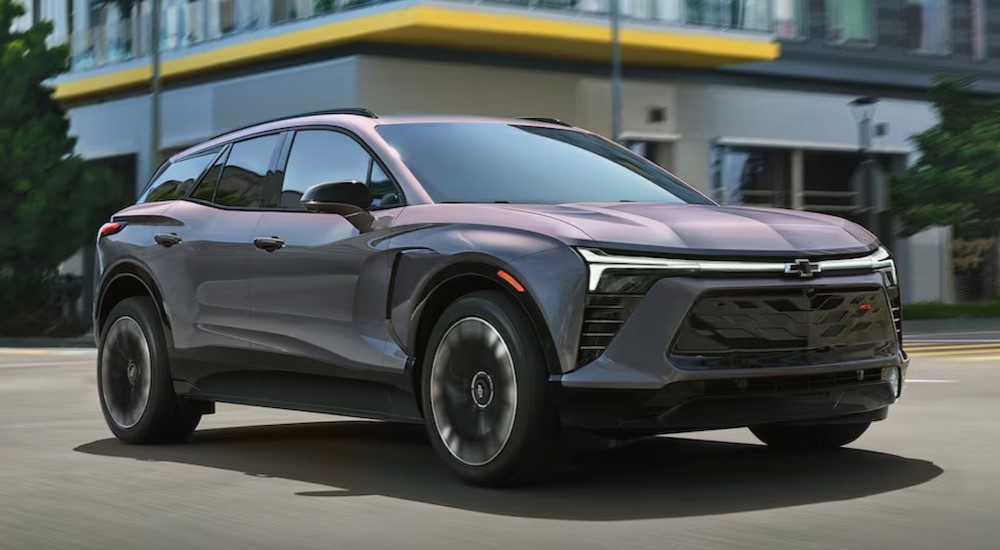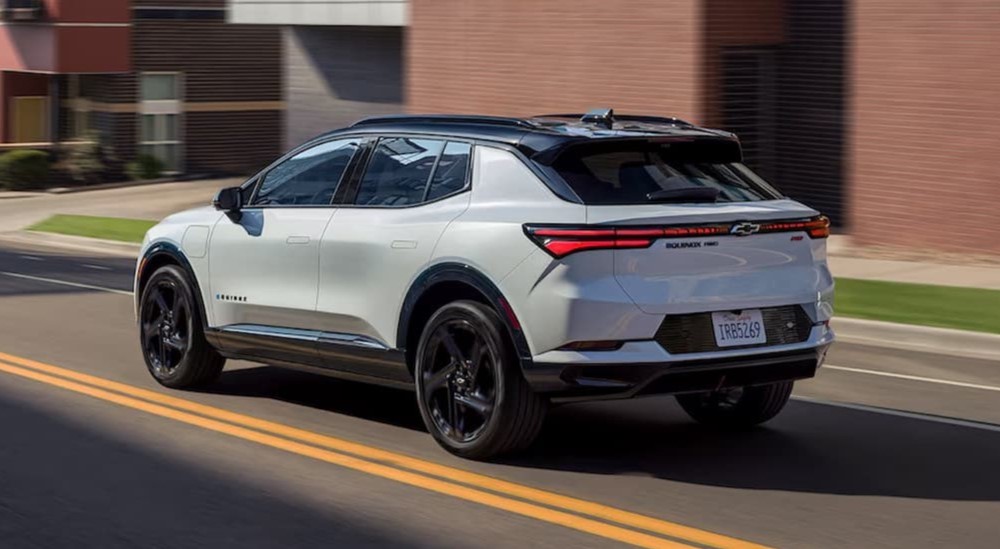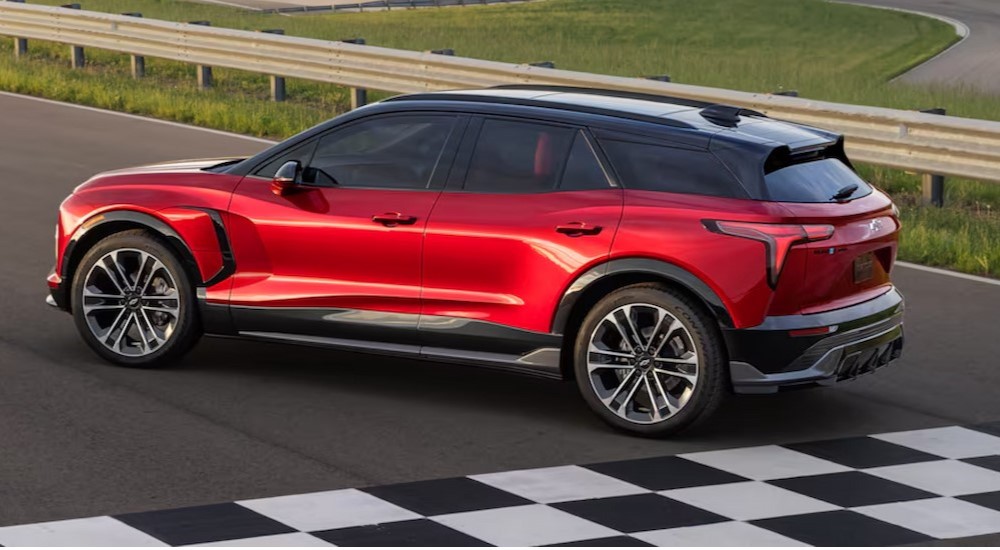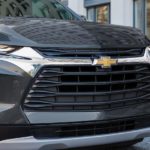Take a stroll around your local Chevy dealer, and you’re bound to see some new EVs wearing familiar nameplates. Chevrolet’s 2024 electric lineup consists of the Silverado EV, Blazer EV, and Equinox EV. The Silverado EV is clearly unique as the only pickup truck in the batch, but the two SUVs have a lot in common. They both debuted for the 2024 model year, they both look fairly similar (though not identical), with modern front ends and sleek lines on the outside and big screens on the inside, and they both share plenty of features, including one of their powertrain options. This can leave prospective buyers wondering: what’s the difference between them? With a little digging, we can get to the bottom of this. Let’s check out the details of these new EVs and see what sets them apart.
Size
The most significant difference between these two models is probably the fact that they’re in different size categories. The Equinox EV is a compact SUV, while the Blazer EV is a midsize model. While they both seat up to five, the Blazer EV offers each of those passengers more room to stretch out and get comfortable. The Blazer EV is at least slightly bigger in every dimension (longer, wider, and taller), providing some extra passenger volume. This also means that the Blazer EV offers more overall room for cargo in the back.
While the size difference most obviously affects passenger and cargo space, it also has some ripple effects. Because the Blazer EV is bigger, it’s also heavier, which has an impact on range. It also takes more materials to make the Blazer EV, which is one reason why it’s the more expensive of the two. As the smaller model, the Equinox EV has the advantage when maneuvering in tight spaces or fitting into compact parking spots.
Powertrain Lineup
Both of these models let you choose between a single-motor two-wheel drive setup and a dual-motor all-wheel drive setup. The AWD powertrain is essentially the same on both models: an 85 kWh battery paired with two motors (one for the front axle, one for the rear), providing enough power to tow up to 1,500 lbs. Because the Blazer EV is heavier, it gets slightly less range than the Equinox EV when both are equipped with this powertrain: the 2024 Equinox EV can drive an estimated 285 miles compared to the 2024 Blazer EV’s 279-mile range.
Opt for a single-motor setup, on the other hand, and the two SUVs have completely different powertrains. The Equinox EV uses the same battery, just with one motor instead of two, giving the front-wheel drive version less power but boosting the range to 319 miles. The Blazer EV, on the other hand, uses a larger 102 kWh battery to power an upgraded rear-mounted motor, giving it more power for improved performance, a higher 3,500 lb towing capacity, and a range of 324 miles.
Trim Levels
The 2024 Blazer EV has a simple lineup of two trims: the base LT, which is AWD-only, and the sportier RS, which can be had with either AWD or the more powerful RWD, features unique black accents on the exterior, and swaps out the cloth seats for Evotex seats. The 2024 Equinox EV also has LT and RS trims but uses a more complicated system that divides them into more trim levels, all of which come standard with FWD but are available with AWD. The base 1LT has just the basics, the 2LT adds comforts like heated front seats, and the 3LT brings additional features like adaptive cruise control, reverse automatic braking, ventilated front seats, and heated rear seats. The 2RS also has comfort features like heated front and rear seats but adds black accents and other styling touches for a sportier look, while the 3RS has the best of both worlds, with the athletic aesthetic paired with ventilated front seats, adaptive cruise control, and more.
For the 2025 model year, the Equinox EV is set to simplify its lineup to just an LT and RS trim, bringing it more in line with the 2024 Blazer EV’s offerings. The 2025 Blazer EV, on the other hand, will be adding a super sporty SS trim to the top of its lineup partway through the 2025 model year. It’s set to pair the more powerful 102 kWh battery with a set of two motors, producing 557 hp and 648 lb-ft of torque so drivers can accelerate from 0-60 mph in just 3.4 seconds using the Wide Open Watts feature. This extra power will certainly come at the expense of range––Chevy estimates that the SS will go around 290 miles on a full charge, but the official EPA figure isn’t available yet.
Tech Features
Since these are two SUVs made by the same company debuting for the same model year, it shouldn’t come as a shock to learn that they both have essentially the same infotainment system. Blazer EV and Equinox EV alike sport a massive 17.7-inch central touchscreen and an 11-inch driver information screen that acts as a digital gauge display behind the wheel. In addition, a head-up display that projects information onto the lower windshield is available on the Blazer EV RS but can’t be had on any trim of the 2024 Equinox EV. If you don’t want to use the touchscreen while actively driving (smart move), then you can also use physical buttons and knobs like the ones built into the steering wheel or give commands using the natural voice recognition system.
Both EVs also come standard with Google Built-In, which lets you use Google apps for navigation, music streaming, and other functions without the need for a smartphone to be connected to the system. If you prefer to connect your smartphone to the system, however, you’re out of luck. Neither Apple CarPlay or Android Auto is available on these EVs. While Google Built-In can replace many of the functions that these smartphone mirroring features are used for, this is still a controversial move that some drivers are hoping will be reversed in future model years.
Safety
When it comes to driver assist technology, both the Blazer EV and Equinox EV come standard with all of the features you would expect to find on a modern vehicle and then some. Forward collision alert (with pedestrian and cyclist detection), rear cross-traffic braking, blind zone alert with steering assist, lane keep assist with lane departure warning, and IntelliBeam automatic high-beam headlights come standard across all trims for both models. Both also have Chevy’s Teen Driver system, which helps parents teach their kids how to drive responsibly, and a safety alert seat, which uses directional vibrations in the seat to alert you to danger and immediately let you know whether the threat is coming from the left or right.
Beyond that, there are several other features that are standard fare on the 2024 Equinox EV but merely available on the 2024 Blazer EV. These include enhancements to the systems that provide warnings and automatic braking in response to danger, like rear pedestrian alert, side bicyclist alert, reverse automatic braking, and intersection automatic braking, as well as HD Surround Vision, which provides a 360º look at the area around the vehicle. However, it should be noted that all of these are standard fare on the 2025 Blazer EV, so this disparity is a short-lived difference between the two 2024 models, not a significant difference between the two long-term.
Similar, Yet Distinct
From styling touches to infotainment systems, the Equinox EV and Blazer EV have plenty in common. However, there are enough differences between them to give each one a distinct identity. The Equinox EV is the compact and affordable model, with options to suit a variety of budgets. The Blazer EV is both larger and sportier, attracting those who are willing to pay extra to get a little more legroom and a lot more oomph. Chevrolet is clearly working to bring all of the demographics it currently serves with traditional gas-powered vehicles into the electric future.






